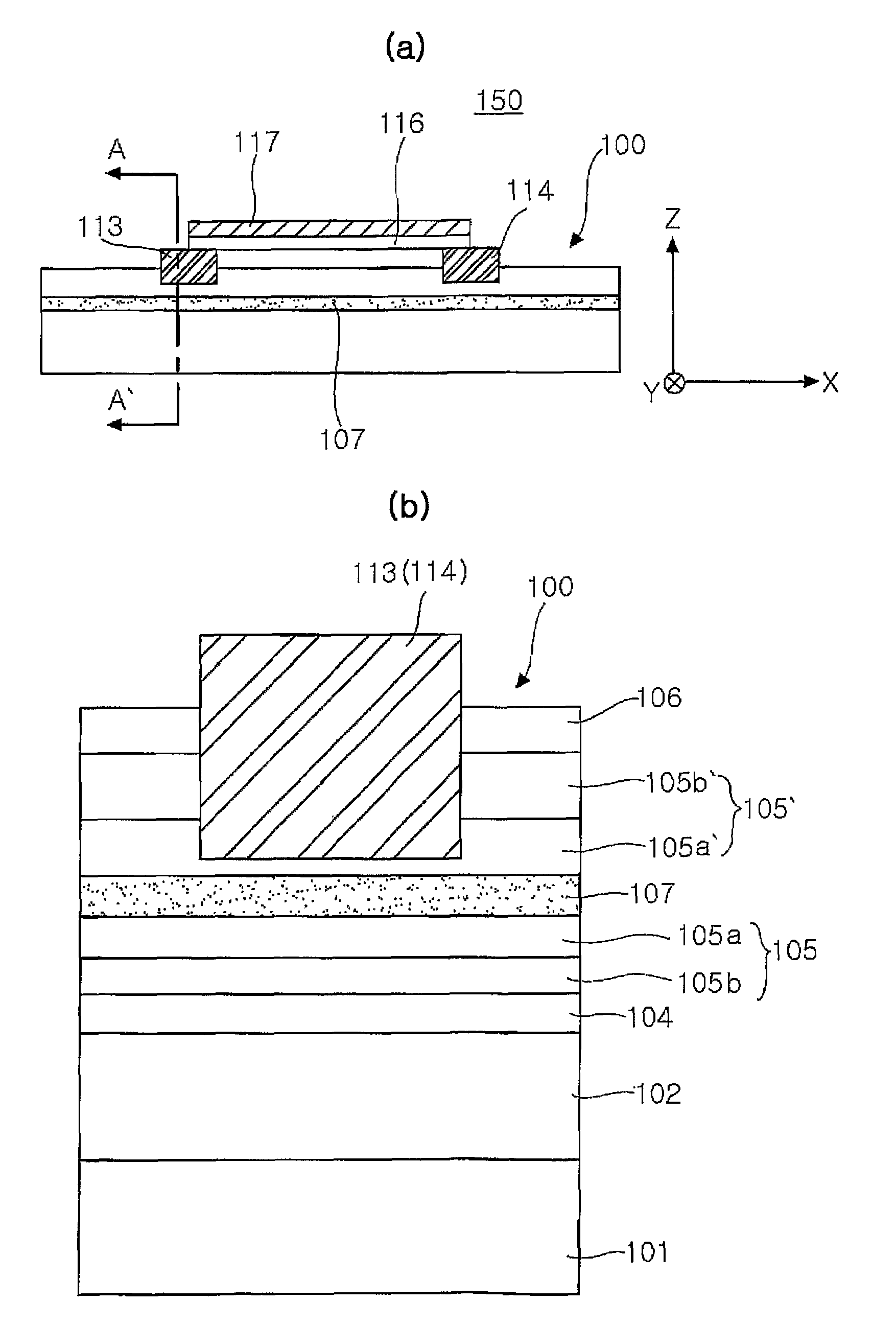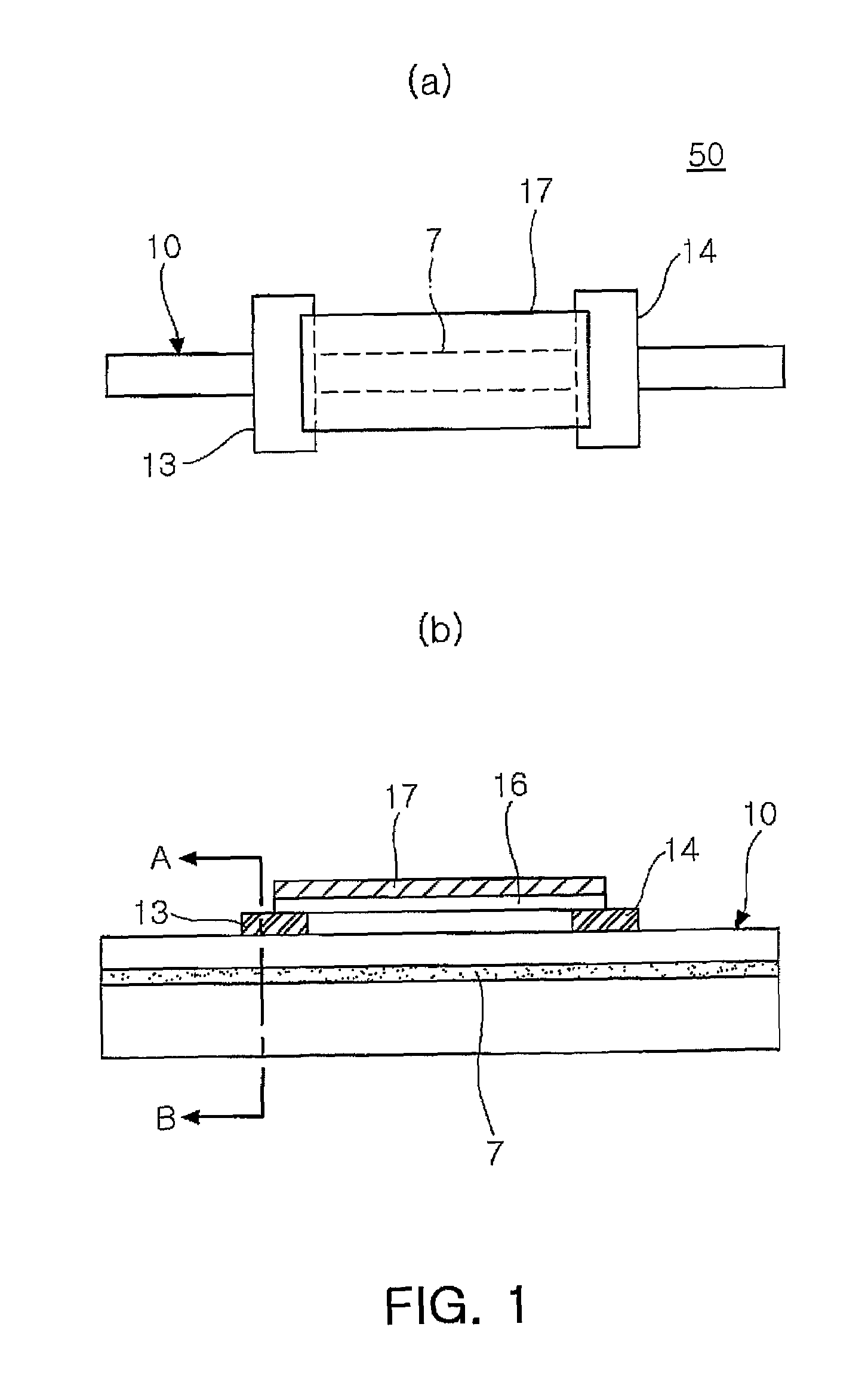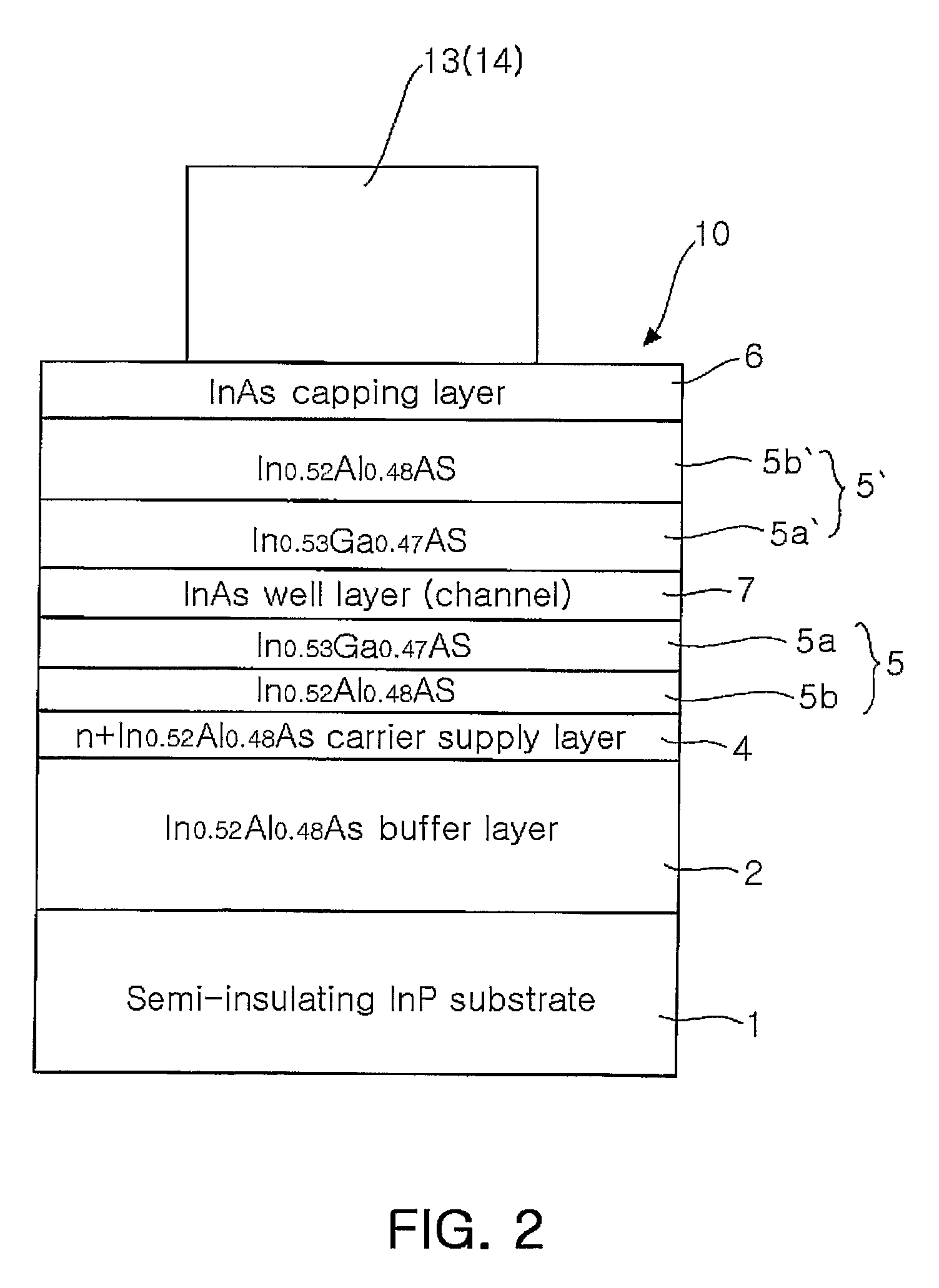Spin transistor using ferromagnet
a ferromagnetic and spin transistor technology, applied in the field of spin transistors, can solve the problems of substantial noise of spin transistors, low injection efficiency, and physical limit of oxide films, and achieve the effects of reducing contact resistance, clear spin transport signals, and reducing the thickness of the energy barrier between the source and the channel
- Summary
- Abstract
- Description
- Claims
- Application Information
AI Technical Summary
Benefits of technology
Problems solved by technology
Method used
Image
Examples
Embodiment Construction
[0040]Preferred embodiments will now be described in detail with reference to the accompanying drawings. It should be noted that the embodiments of the invention can take various forms, and that the present invention is not limited to the embodiments described herein. The embodiments of the invention are described so as to enable those having an ordinary knowledge in the art to have a perfect understanding of the invention. Accordingly, shape and size of components of the invention are enlarged in the drawings for clear description of the invention. Like components are denoted by the same reference numerals throughout the drawings.
[0041]FIG. 4(a) is a cross-sectional view of a spin transistor according to one embodiment of the present invention, and FIG. 4(b) is a cross-sectional view taken along line AA′ of FIG. 4(a).
[0042]Referring to FIG. 4(a), a spin transistor 150 comprises a semiconductor substrate part 100 having a channel layer 107 formed therein, and a ferromagnetic source ...
PUM
 Login to View More
Login to View More Abstract
Description
Claims
Application Information
 Login to View More
Login to View More - R&D
- Intellectual Property
- Life Sciences
- Materials
- Tech Scout
- Unparalleled Data Quality
- Higher Quality Content
- 60% Fewer Hallucinations
Browse by: Latest US Patents, China's latest patents, Technical Efficacy Thesaurus, Application Domain, Technology Topic, Popular Technical Reports.
© 2025 PatSnap. All rights reserved.Legal|Privacy policy|Modern Slavery Act Transparency Statement|Sitemap|About US| Contact US: help@patsnap.com



